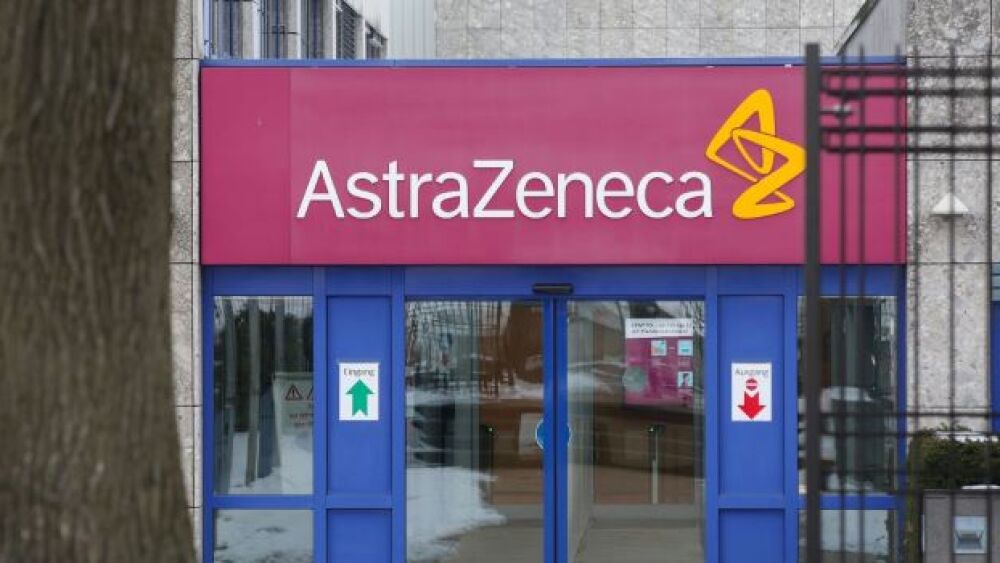AstraZeneca reported a pre-specified pooled analysis from its Phase III trial of the diabetes drug Farxiga in patients with heart failure.
Bodo Marks/picture alliance via Getty Images
AstraZeneca reported a pre-specified pooled analysis from its Phase III trial of the diabetes drug Farxiga (dapagliflozin) in patients with heart failure (HF), stating that Farxiga is the first HF drug to demonstrate mortality benefits for all forms of HF.
The company presented the results at the European Society of Cardiology Congress 2022 in Barcelona, Spain, with a simultaneous publication in Nature Medicine. The data demonstrated a drop in risk of cardiovascular (CV) death across pre-specified subgroups, with a mortality benefit with an HF therapeutic in patients with HF across the left ventricular ejection fraction (LVEF) range.
Farxiga is a first-in-class, oral, once-daily SGLT2 inhibitor, a class of drugs that were originally developed to treat type 2 diabetes. However, the class has demonstrated benefits to patients with chronic kidney and heart disease and helps prevent heart attacks.
“In this patient-level meta-analysis including over 11,000 patients with heart failure across the full range of ejection fraction, dapagliflozin reduced the risk of both cardiovascular death and heart failure hospitalisation,” John McMurray, M.D., professor of Medical Cardiology and deputy director of the Institute of Cardiovascular and Medical Sciences at the University of Glasgow, UK, stated. “These results underpin the valuable role dapagliflozin can play in clinical practice, as we can initiate treatment right away while waiting for ejection fraction to be measured.”
Hf is a chronic, long-term disease that grows worse over time. It affects about 64 million people worldwide and is associated with significant health problems and risk of death. Chronic HF is the leading cause of hospitalization for people 65 and older.
In the pooled analysis, the drug reduced the risk of CV death by 14%, with an absolute risk reduction over the median follow-up of 22 months. It decreased death from any cause by 10% and cut total hospitalization — first and repeat — for HF by 29%.
It also reduced the composite of death from CV causes, myocardial infarction, or stroke by 10% in patients with HF regardless of LVEF. LVEF is a measurement of the percentage of blood leaving the heart every time it contracts and has several gradations, including HF with reduced EF (HFrEF), HF with mildly reduced EF (HFmrEF) and HF with preserved EF (HFpEF).
In 2021, Farxiga was the company’s primary growth driver when chronic kidney disease (CKD) was added to the label. The drug has been approved in more than 100 countries to improve glycemic control in adults with type 2 diabetes and for HFreF in patients with and without type 2 diabetes. It received first-in-class approval for CKD in patients with and without type 2 diabetes in the U.S., European Union, U.K., Japan and other countries. The drug brought in $3.005 billion in revenue for the year, down 23% compared to the previous year.
If the drug should be approved for a broader treatment of heart failure based on the current results, Ruud Dobber, EVP and president of AstraZeneca’s Biopharmaceuticals Business Unit, said Farxiga’s addressable patient population would jump by 50%. However, it wouldn’t be without competition for those patients; both Eli Lilly and Boehringer Ingelheim ran clinical studies of their competitive drug Jardiance in similar patients last year. Eli Lilly reported Jardiance bought in $1.498 billion in 2021, up 29% from the previous year.
The study results will likely bring SGLT2 inhibitors to the head of heart failure therapy, said study co-author Scott Solomon, Ph.D., professor of medicine at Harvard Medical School, Brigham and Women’s Hospital.
Physicians will probably choose Farxiga or Jardiance depending on cost and availability, which will “probably be more important than any potential differences between those therapies,” Solomon said.





